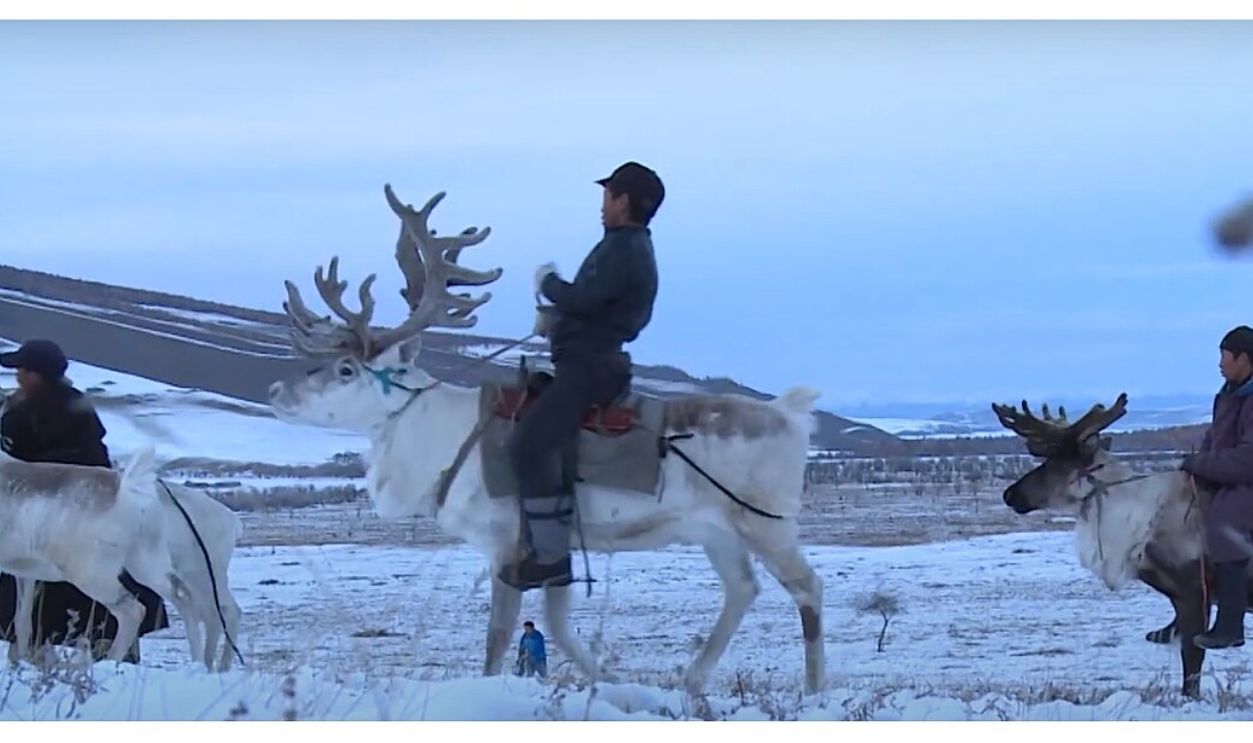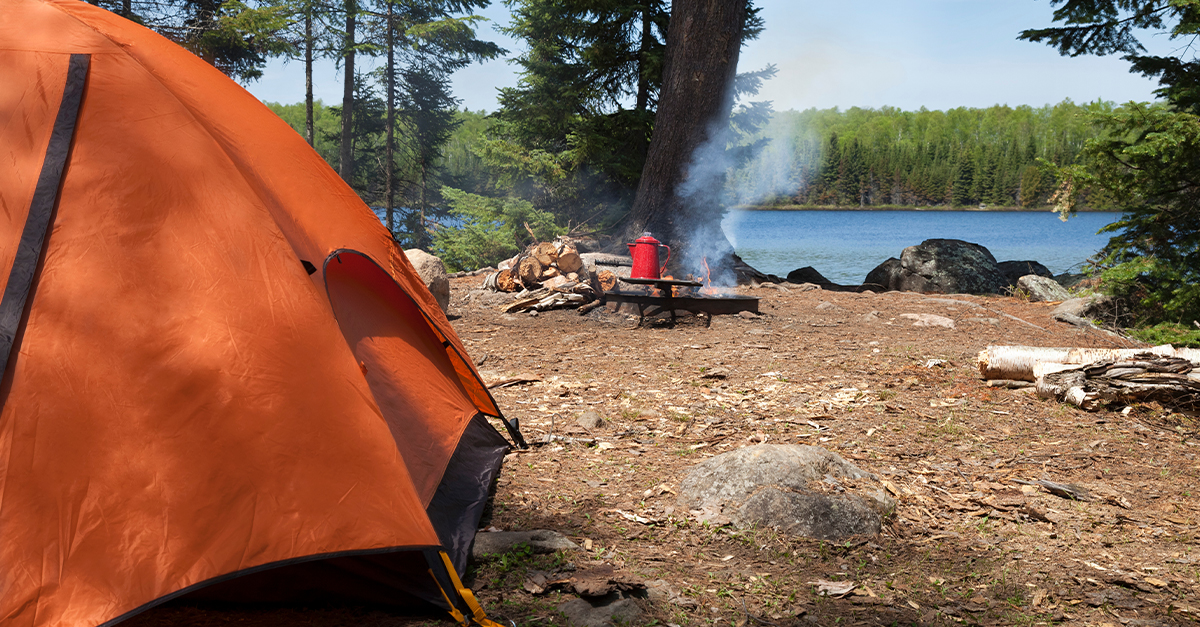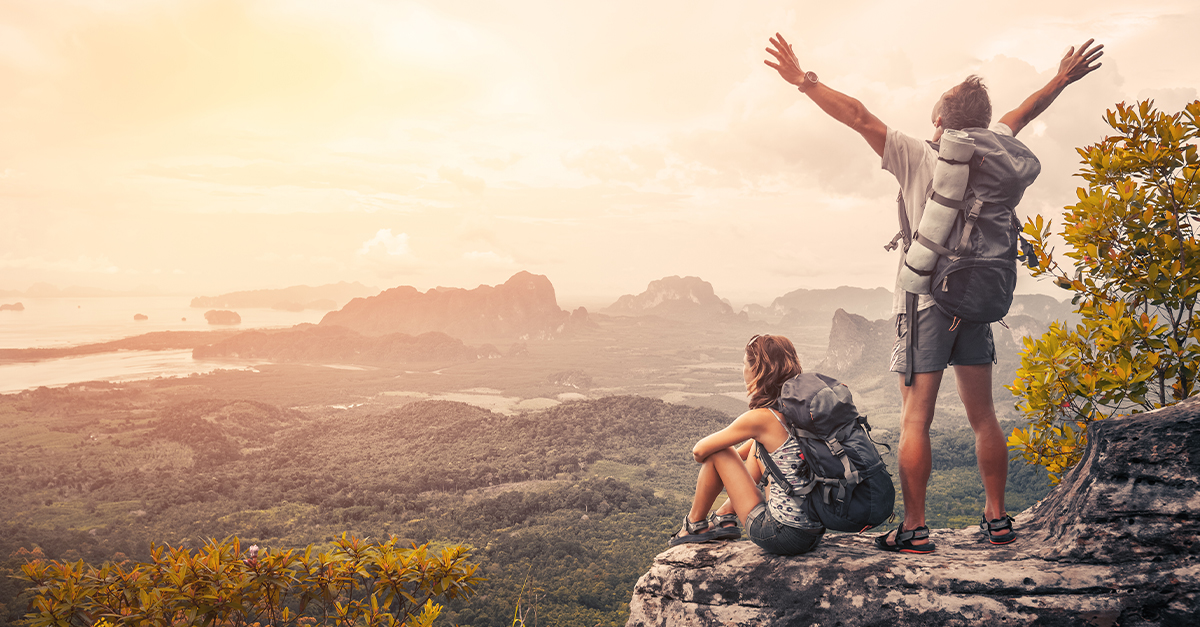A Vanishing Culture
The Dukha are a diminishing nomadic tribe living near the Mongolia-Russia border in northern Mongolia. They say that without reindeer, their culture would disappear entirely and become just a story. This perspective adds to their intriguing story of survival through centuries of change.

Origins And Legacy
The Dukha, also known as the Tsaatan, are Mongolia’s last reindeer nomads. The tribe reportedly had just 208 members in 2020. They’re basically a Turkic group living a semi-nomadic lifestyle as reindeer herders in Tsagaannuur, Khövsgöl Province.
Origins And Legacy (Cont.)
This community comes from both the northeast and southeast parts of Tuva, which is now part of Russia. According to researchers, they are recognized as Mongolia’s only reindeer herders and are considered among the earliest people to domesticate animals.
Ancient Roots
The Dukha’s ancestors, the Kazylgan clan, were around in Tuva from the 7th to the 3rd Century BC. They were eventually replaced by pastoral Hun tribes that introduced some new languages. By the 1st century AD, those tribes had started speaking Kettic and Samoyedic dialects.
 John Thomson, Wikimedia Commons
John Thomson, Wikimedia Commons
Where It All Began
The source of their culture was in 551 AD when the Turkic tribes mixed with the local people of Tuva. As expected, this blend of Turkic people and the indigenous tribes mixed their traditions, language, and beliefs. This was the beginning of a hybrid culture.
 G. Heuer & Kirmse X. A., Wikimedia Commons
G. Heuer & Kirmse X. A., Wikimedia Commons
The Arrival Of The Dubo (7th Century)
As all this unfolded, the Dubo people had come to the Eastern Sayan area. They were thought to be related to nomadic groups from the ancient Xiongnu or other groups. When they came, they changed many things as well—trade, migration, community interactions, clothing, and oral traditions.
 The Xiongnu Empire: Nomads of the Steppes | History Documentary by Past Historical Events
The Xiongnu Empire: Nomads of the Steppes | History Documentary by Past Historical Events
Then Came The Uyghur Influence (8th-9th Century)
In the 8th and 9th Centuries, another tribe, the Uyghur Khaganate, rose to power. This further divided the Tuvan groups and gradually evolved to the Dukha, one of four Tuvan subgroups that inhabited the Taiga region in Northern Mongolia. The other three subtribes evolved in Steppe and mountainous regions.
 flickr, CC BY-SA 2.0, Wikimedia Commons
flickr, CC BY-SA 2.0, Wikimedia Commons
Migration Journey
Until 1944, the Dukha members could freely traverse the Tuva-Mongolia border allowing them to truly flourish in their semi-nomadic lifestyle as reindeer herders. However, significant changes dawned on them when the Soviets annexed Tuva. This led to the closing of the border. Then it was all downhill from there.
Migration Effects
First, many Dukha people moved to Mongolia to escape the tough times brought on by Soviet collectivization and the food shortages during WWII. This migration ended up splitting families apart for good, as the borders became like walls that divided their communities.
 Unknown author, CC BY 4.0, Wikimedia Commons
Unknown author, CC BY 4.0, Wikimedia Commons
Cultural Adaptation
Then, by 1956, Mongolia granted Dukha citizenship and moved them close to Tsagaan Nuur Lake (central Mongolia). This government control interfered with their traditional reindeer herding lifestyle. The second effect was their language fading, and it only left a few speaking it.
 Unknown author, CC BY 4.0, Wikimedia Commons
Unknown author, CC BY 4.0, Wikimedia Commons
Economic Transition
The economic changes of the 1990s brought a big switch from socialism to privatization. Many of these individuals returned to herding reindeer after working in cities for a while. Then, in the mid-90s, tourism started picking up and became a possible revenue source for the tribe.
 Taylor Weidman, CC BY-SA 3.0, Wikimedia Commons
Taylor Weidman, CC BY-SA 3.0, Wikimedia Commons
Spiritual Foundation
The Dukha spiritual community adheres to Shamanism, Tengrism, and Animism. Apparently, its reverence extends to all aspects of nature, including the ground, the sky, and its ancestors, which it considers to be great powers that control human lives.
 Irgit, CC BY-SA 4.0, Wikimedia Commons
Irgit, CC BY-SA 4.0, Wikimedia Commons
Spiritual Foundation: Shamanism
The Dukha community practices a form of Shamanism that is considered one of the oldest variants practiced by Turkic and Mongolian nomads. In this practice, they believe in the presence of spirits that inhabit the natural world and rely on Shamans.
 Enrique Bendicho, CC BY-SA 4.0, Wikimedia Commons
Enrique Bendicho, CC BY-SA 4.0, Wikimedia Commons
Spiritual Foundation: Shamanism (Cont.)
This is referred to as boo to mediate between the physical realm and the spirit world. Shamans perform various rituals and ceremonies to welcome the new moon and practices for invoking or banishing rain, which shows their connection to nature’s cycles.
 Sergei Ivanovich Borisov, Public domain, Wikimedia Commons
Sergei Ivanovich Borisov, Public domain, Wikimedia Commons
Spiritual Foundation: Tengrism
Tengrism is an old belief system focused on worshiping Tengri, the sky god, and it highlights how everything in the world is connected. The Dukha incorporate Tengrism into their daily lives. They see it as an important guide for their spiritual practices.
 Arkady Zarubin, CC BY-SA 3.0, Wikimedia Commons
Arkady Zarubin, CC BY-SA 3.0, Wikimedia Commons
Spiritual Foundation: Animism
The Dukha also have a slightly different way of thinking, where they believe that everything in nature—be it animals or plants—has its own spirit. This belief gives them a strong respect for all creatures, especially reindeer, which they see as sacred and respected.
 Munkhbayar.B, CC BY-SA 4.0, Wikimedia Commons
Munkhbayar.B, CC BY-SA 4.0, Wikimedia Commons
Beginning Of Communist Suppression
The Communist Party of the Soviet Union ruled the country from 1925 until 1991. Shamanistic religious practices were severely prohibited by government officials in Mongolia during this time. During this rule, they systematically destroyed most of their religious dwellings, and shamanic practices were targeted.
 [Mongolia] How did Mongolia become communist? by History Hustle
[Mongolia] How did Mongolia become communist? by History Hustle
Arrests Of Shamans
Adding to that, many Shamans, who served as spiritual leaders and mediators between the Dukha and the spirit world, were arrested by government authorities. This crackdown aimed to remove what was seen as a challenge to the state’s ideology.
 mm, CC BY-SA 3.0, Wikimedia Commons
mm, CC BY-SA 3.0, Wikimedia Commons
Religious Revival
It was only after Communist rule ended in 1991 that the Dukha regained the freedom to practice their traditional faith. This marked a significant period of cultural and spiritual restoration. Moon-welcoming ceremonies and specific river water retrieval rituals were back.
Community Structure
It is said that the Tsaatan folks often marry into local ethnic groups such as the Bargash, Soyan, or Orat. These clans are referred to as Jono and have specific sub-clans established to conduct marriages outside their group, adhering to traditional customs.
Sacred Reindeer Connection
Know the reindeer's Santa rides? Yes, those ones are a huge part of the Dukha's life. They rely on them for milk, transportation, and even spiritual ceremonies. Unlike other herders, this trial community hardly ever kills these animals because they see them as family and consider them sacred.
Reindeer Management
Usually, two to seven families team up to share herding duties, and kids start learning the ropes pretty young. Women take care of the milking and making of dairy products, while the men focus on keeping the herds safe from predators.
Traditional Dwelling
Their homes, known as Ortz, are similar to Native American teepees. To build a large one, you’d need bark from about 32 trees, while a medium-sized one takes around 25. Inside, they keep things simple—just the basics like bedding, utensils, hunting gear, tools, and some sacred items.
 Bernard Gagnon, CC0, Wikimedia Commons
Bernard Gagnon, CC0, Wikimedia Commons
Seasonal Movement
True to their name, “nomads”, the Dukha camps relocate every seven to ten weeks, sticking to old migration routes. In the summer, they set up shop at around 2,300 meters, then drop down to 1,800 meters when winter hits. The reindeer help them make the move as they look for fresh moss to munch on.
Residential Organization
Tent communities, known as oral-lal in the Tuvan language, are where families reside together within a few kilometers of each other. These residential units include parents, children, extended family, and friends, each represented by one designated member.
Transportation Role
Reindeer are super important for getting around in the hilly, tree-filled Taiga. People use them for all sorts of activities, such as grazing, hunting, gathering firewood, moving during seasons, visiting family, and going into town to pick up supplies. It’s literally their ride.
Riding Methods
Riders sit on saddles made from wood and leather and use a stick as a whip to guide or encourage the reindeer during travel. Then, using conventional riding techniques, they use reins and gentle guidance to guide their reindeer once they have mounted.
Reindeer Training Practices
Their reindeer training begins when a calf hits the age of two, also known as the dongor stage. At this stage, calves are introduced to handling basic tasks and responding to simple commands. This foundational training is essential for their development as working animals.
Training Practices (Cont.)
Kids are lighter in weight, so they start their training on calves without using saddles. This way, they can connect with the animal and help the reindeer get used to carrying a rider. Adults typically ride reindeer that are at least three years old, known as hoodai.
Training Practices (Cont.)
At three years, the reindeer are more capable of holding heavier loads, and the riders prefer castrated male reindeer, which is called zari. Notably, these ones are generally easier to handle and calmer than females or uncastrated males, who are usually stubborn or aggressive.
Pack Animal Usage
Pack animals are not required to undergo any specialized training because they start early. Female reindeer can carry loads of up to 30 kg, and males approximately 40 kg. The fact that they make trips every two to ten weeks makes traveling across the Taiga region easier.
Food Practices
Due to the fact that these tribals rarely kill reindeer, they augment their diet of reindeer milk products by hunting elk, moose, bear, sable, and boar for meat. Reindeer milk is used to produce a variety of nutritional staples, which include yogurt, cheese, and milk tea.
Harvesting Protocol
Reindeer usually shed their antlers (the branched bony structures on their heads) in early summer, which is when the Dukha people step out to collect them. This method is quite sustainable since they’re picking up what the animals are naturally dropping and not causing harm to the reindeer at all.
Harvesting Protocol (Cont.)
To safely collect the antlers, the Dukha simply tied the reindeer’s legs to keep them still during the process. This ensures that the animals remain calm and do not resist while their antlers are being sawn off. Pregnant female reindeer are not included in this practice. The reason?
Harvesting Protocol (Cont.)
The reason is simple: their antlers play a critical role in regulating their body temperature during pregnancy. So, leaving them intact is essential for their health and that of their calves. The antlers they harvest are for traditional Chinese medicine, tool carving, and souvenirs.
Habitat Disruption
Unfortunately, the Taiga, known for its dense forests of coniferous trees and wetland areas, is quickly degrading due to climate change. This affects where reindeer can graze and throws off the whole ecosystem that supports both the animals and the Dukha people’s way of life.
Population Challenges
Basically, the lichen that reindeer rely on for food has been disappearing, which means there are fewer herds. Also, in 1990, there was a big outbreak of brucellosis that hit the population hard. Reportedly, by 2010, there were only around 600 reindeer left.
Reindeer Re-Growth
Mongolia’s reindeer population severely dropped from 2,280 to 616 during the 20th Century. However, thanks to the assistance provided by organizations, individuals, foundations, and the government, the numbers rebounded to 2,690 by the year 2020.
Dress Culture
Switching gears to some fashion, the Dukha wear hats similar to those of the Khalkh people. These hats are designed to provide warmth and protection against the cold. They often feature unique designs and are made from insulation-rich materials.
Dress Culture (Cont.)
Their attire is also characterized by the inclusion of large deels, which are traditional Mongolian overcoats. Deels are versatile and can be worn by both men and women. Their footwear consists of sturdy, warm boots made from reindeer hides and sinew.
Annual Celebration
So, every year, on July 6 and 7, the fantastic Reindeer Festival occurs close to Khuvsgul Lake in Mongolia. This cultural event provides a chance for 80 to 90 families from the Taiga forest, who together herd over 3,000 reindeer, to share their customs.
 Mark Harkin, CC BY 2.0, Wikimedia Commons
Mark Harkin, CC BY 2.0, Wikimedia Commons
Festival Activities
Horse racing, polo matches, wrestling contests, reindeer races, and traditional Mongolian and Tsaatan music are among the events that take place during the two-day celebration. Visitors can also go horseback riding, experience oxcarts, and view reindeer.
 Living in Northern Mongolia | Riding Reindeer by Simple Wild Living
Living in Northern Mongolia | Riding Reindeer by Simple Wild Living
Support Systems Organizations
The Totem Peoples Preservation Project and the Mongolian Reindeer Fund focus on training Dukha herders in sustainable practices that can help reduce the effects of climate change. It includes educating them on animal husbandry techniques that promote reindeer health.
 Bernard Gagnon, CC BY-SA 3.0, Wikimedia Commons
Bernard Gagnon, CC BY-SA 3.0, Wikimedia Commons
Income Sources
Here, adults and children receive monthly payments from the government, while tourism is said to be beneficial for some households. They hunt during the fall, use spears to fish for food, and collect and sell berries, pinecone nuts, and medicinal plants.
Current Access and Location
Here’s something for those interested in visiting. Between East and West Taiga, the Tsaatan tribe divides into two factions based on their grazing territories. Through Zaya, who is the only English-speaking inhabitant in East Taiga, you can meet a few families, which vary based on migration.

































